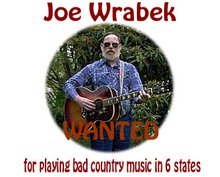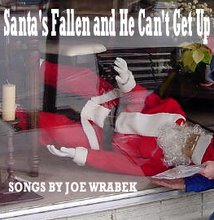Friend Eileen is planning a documentary on the making of the Sedona Fire album. Neat idea. I’d like to do one of those myself—of my next album. There are only two major time constraints: YouTube has a 15-minute limit, and anything on public television has a 28-minute limit. I’d want to break mine into smaller increments anyway—though I’d want to have a final product that would be coherent in 28-minute blocks, just in case. You never know where these things might go.
There are other people I could do the documentary on besides me—I know of one band that’s been slowly struggling for months toward production of an album—but I always prefer to experiment on myself first; when I do something for someone else, I like to know what I’m doing. I’d love to enlist a videographer to help, but I may well be doing the filming and production on my own. I do have the tools, and thanks to last year’s video class, the education as well.
I have seen “making of the album” videos by some other people. Mine will be different. I’m not going to be spending a lot of time in the studio recording (and therefore there won’t be much film of that); studio time costs money, and I have learned how to minimize the outlay of money. What I’d spend time (and film) on is what happens before and after.
The first step in making an album is picking the material. I said for the next album I wanted the fans’ input on what they’d want to hear, so I’ll send them a list, with links to the “draft” recordings of the songs, and see what they pick. I want roughly 12 songs on the CD (45-60 minutes of music), but I could go as high as 16 songs (80 minutes) if it were necessary.
Arrangements come next: what order the songs should be in, and what instruments I want playing on each song. I’m not limited to just the five pieces in the band; I can pull in other folks (and I know people who play a lot of different instruments). As long as I don’t go overboard, the cost will not be appreciably higher.
Next, picking a studio. I’d use Mike Simpson’s studio in a heartbeat, but I’m not sure it’s going to be available; if not, I’ll have to hunt—again. I’d want to visit several people, covering a range of options, and talk about the pros and cons of each one. I might want to include a visit to one of the Big Boys in Portland, just for comparison purposes. In all cases, I’d have the operators talk about how they do what they do (and with what equipment).
One thing I’d ask them about is recording the album “Patsy Cline style”—all the band together playing live. Some studios (and some operators) can do this, and some cannot. It is one of the biggest cost savings when you’re using a commercial studio, because you’re not spending time layering individual tracks. Alternatively, you can record an album yourself, and I’d talk about the costs and benefits of doing that as well. I’d compare prices—and timelines.
Practice. Patsy Cline’s band was able to do nearly everything note-perfect live and in one take because they’d practiced outside the studio (which cost nothing). This is the other big savings in recording. We pull into the practices any “outside” instrumentalists, too, if possible. And film it, of course.
Not much footage of the musicians recording in the studio; ideally, we’re not there long. However, I‘ll be talking to the sound engineer afterwards, as they mix and master, about how and why they do what they do. And play some of the results.
Post-production stuff: Designing the album jacket and label; finding a manufacturer (or manufacturing your own); “short run” production for the New Business Model. Figuring out how to sell the thing, and organizing the CD Release Party.
One reason to do all this—and to spread it out in several increments—is it builds attention for the album (and hopefully sales), when the album does come out. People who have been watching (and we hope there are a lot of them) know what’s on the album, and why, and how it got there; they have a greater sense of ownership, perhaps, because they have a greater understanding. And how many people know what goes into an album, big or small?
Joe
WELCOME...
This blog is the outgrowth of a songwriting workshop I conducted at the 2006 "Moograss" Bluegrass Festival in Tillamook, Oregon. It presumes that after 30-odd years of writing and playing music, I might have something to contribute that others might take advantage of. If not, it may be at least a record of an entertaining journey, and a list of mistakes others may be able to avoid repeating.
This blog is intended to be updated weekly. In addition to discussions about WRITING, it will discuss PROMOTION--perhaps the biggest challenge for a writer today--as well as provide UPDATES on continuing PROJECTS, dates and venues for CONCERTS as they happen, how and where to get THE LATEST CD, the LINKS to sites where LATEST SONGS are posted, and a way to E-MAIL ME if you've a mind to.
Not all these features will show up right away. Like songwriting itself, this is a work in progress. What isn't here now will be here eventually. Thank you for your interest and your support.
Subscribe to:
Post Comments (Atom)



No comments:
Post a Comment